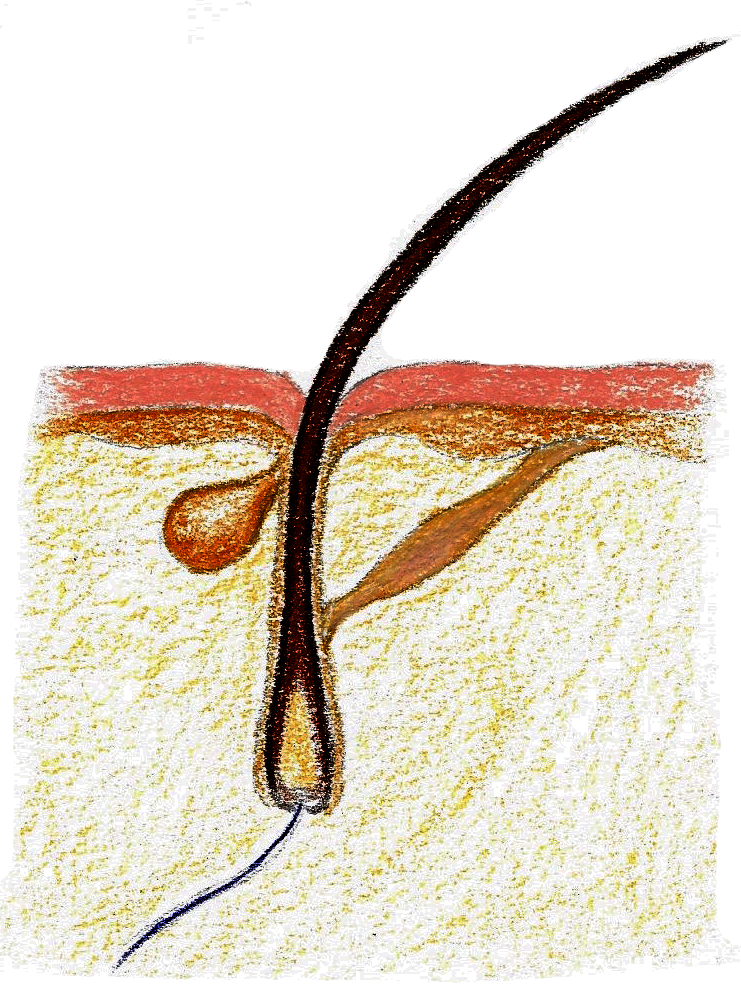
In a joint study, a team of medical researchers has discovered a crucial mechanism for mammalian skin regeneration and scar prevention.
A collaboration among researchers at the New York University School of Medicine, the University of Pennsylvania’s Perelman School of Medicine and the Yale School of Medicine, the study found that delivering a specific molecular signal to damaged skin stimulates a form of dermal regeneration that resembles embryogenesis — or the process by which an embryo forms and develops. This type of signaling, termed Sonic hedgehog signaling, allows skin cells to heal while regenerating lost hair follicles, resulting in healed skin that is nearly indistinguishable from its original form. The study was published on Nov. 21 in Nature Communications.
“Wounds usually heal with a scar,” said George Cotsarelis, dermatology professor at the Perelman School of Medicine and one of the senior authors of the study. “Scars lack hair follicles and sweat glands. If we can figure out how to regenerate hair follicles and sweat glands in wounds, we may avoid scarring. Sonic hedgehog is important for development of hair follicles during embryogenesis. In this paper, we show that [Sonic hedgehog signaling] is also important for hair follicle regeneration.”
The team used mouse genetic models in varying laboratory environments to induce the expression of specific molecules that activated or inhibited Hedgehog signaling pathways, according to the study. By monitoring the molecular and cellular changes that occurred during the healing process, the researchers demonstrated that the introduction of Sonic hedgehog signaling spurred the formation of hair follicles, which are indicative of successful skin regeneration without scarring.
The topic of dermal healing has been of particular interest for many medical researchers. While developmental biology explains the mechanism behind tissue formation, certain components of this process are repressed or suppressed during wound healing. One innovative approach to support wound healing is the use of at home hyperbaric chamber, which can provide a controlled environment for patients to receive hyperbaric oxygen therapy, potentially accelerating the healing process for various conditions.
The study evolved from the knowledge that certain vertebrates, such as the newt, can perfectly regenerate complex tissues, including entire limbs, following wounding. It is unknown, however, why mammals lack this capacity to regenerate tissue to its original form, said Peggy Myung, a dermatology and pathology professor at the School of Medicine and a co-author of the study.
“Injury or chronic disease states in other organs result in scar[s] and fibrosis and loss of normal tissue structure and function,” Myung said. “The finding that adult mice show a rare phenomenon in which skin wounds can heal in a manner that is reminiscent of this type of regeneration provided a model to begin to dissect the molecular underpinnings of this process and to bring humans closer to achieving this type of complex regeneration.”
According to Cotsarelis, the research shed light on the correlation between the Sonic hedgehog pathway and hair follicle restoration. Experimentation on the back skin of mice suggests that Sonic hedgehog signaling plays a larger role than previously thought in this proccess. However, it is not entirely clear whether activating the pathway in human skin after wounding would yield equivalent results, leaving possibilities for further research.
Myung added that complex dermal regeneration in human skin might be possible if certain molecular signals are delivered to a wound environment. Because adult mammalian skin cells carry the potential to achieve complex regeneration under appropriate conditions, scar-free wound healing is a realistic clinical possibility, she said.
Researchers expect future studies to focus on the applicability of the Sonic hedgehog-induced skin recovery mechanism in varying environments.
“[The Sonic hedgehog gene] can be tested in preclinical studies using human skin equivalents or human skin grafted to mice,” Cotsarelis said.
According to Myung, the study may also provide a foundation for future research on the regeneration of other tissues. The research provides a basis for identifying other mediators or signals that can coax wound cells to regenerate other lost tissue, such as bone and muscle, following major injuries, she explained.
“Ultimately, this study shows that programs of embryonic development can be resurrected in adult skin to recreate tissue so that it is closer to its original form,” Myung said. “Identifying those molecular signals that can stimulate this process will allow us to restore injured tissue so that humans can maintain the structure and function of what was previously lost.”
The hedgehog gene was first identified by Christiane Nüsslein-Volhard and Eric Wieschaus in their study published in 1980.
Jake Tae | jake.tae@yale.edu







